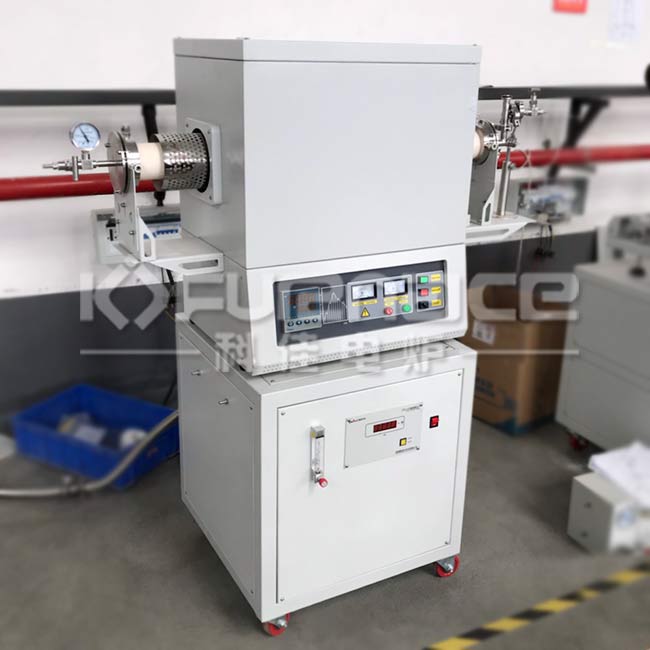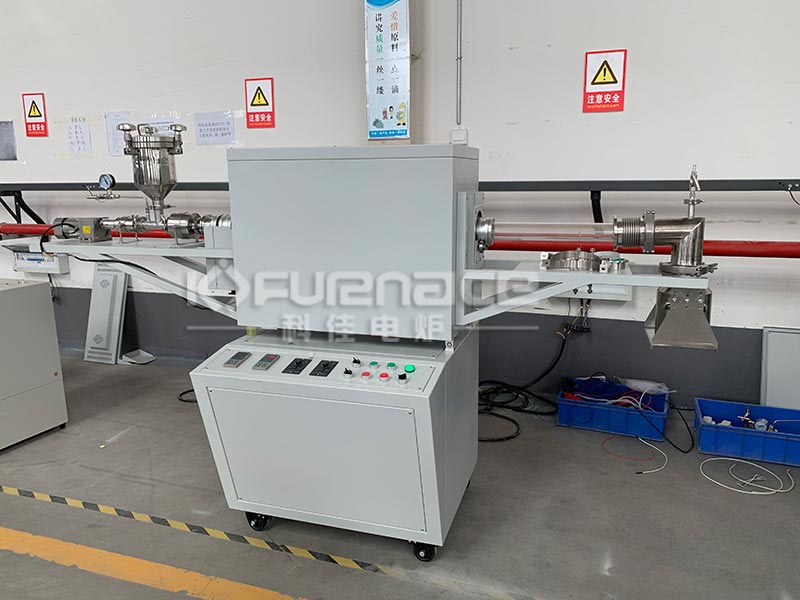When using an experimental tube furnace, there are many things to pay attention to to to ensure safe operation and normal operation of the equipment. Let’s take a look at what to pay attention to when using an experimental tube furnace!

A commonly used high-temperature vacuum tube furnace (click on the image to view product details)
Safety precautions for operation
Wear personal protective equipment: Wear heat-resistant gloves, goggles, and laboratory jackets to prevent injury from thermal radiation and splashes.
Check the condition of the equipment: Before use, check the power cord, temperature control system, and heating elements of the tube furnace to ensure that the equipment is intact and undamaged.
Ventilation requirements: Ensure good ventilation in the laboratory and use exhaust equipment if necessary to prevent the accumulation of harmful gases.
Operating environment: Place the tube furnace on a stable and heat-resistant workbench to avoid flammable materials around it.
Preparation before use
Calibrate the temperature control system: Ensure that the temperature control system has been calibrated correctly to prevent temperature errors from affecting the experimental results.
Loading samples: Place the samples evenly inside the furnace tube to avoid overloading. If using quartz or ceramic tubes, ensure that their temperature resistance meets the experimental requirements.
Gas flow control: If the experiment involves gas flow, ensure that the flow controller works properly and that the gas type and flow rate meet the experimental design requirements.
Precautions during operation
Temperature control: Set the heating program according to the experimental requirements, gradually increase the temperature to avoid sudden temperature changes, and prevent thermal shock from damaging the equipment or sample.
Monitoring experiment: During the experiment, regularly monitor temperature and atmosphere changes, and record experimental data.
Prevent overheating: Avoid prolonged high-temperature operation, as exceeding the rated temperature of the equipment may cause damage or fire.
Sample removal: After the experiment is completed, wait for the furnace temperature to drop to a safe temperature before removing the sample to avoid high-temperature burns.
Maintenance and upkeep
Regular inspection: Regularly inspect the electrical components and heating elements of the tube furnace to ensure its normal operation.
Cleaning: After use, clean the furnace tube and interior to prevent residue accumulation from affecting the next experiment.
Record maintenance: Keep good records of equipment usage and maintenance to facilitate tracking of equipment status and troubleshooting.
Spare parts: Reserve commonly used spare parts, such as heating elements and furnace tubes, to facilitate timely replacement of faulty components.

A commonly used laboratory rotary tube furnace (click on the image to view product details)
By following the above precautions, the safe operation of the experimental tube furnace can be effectively guaranteed and the service life of the equipment can be extended.Click to learn more experimental tube furnace! Or click on online customer service to learn more about product information!